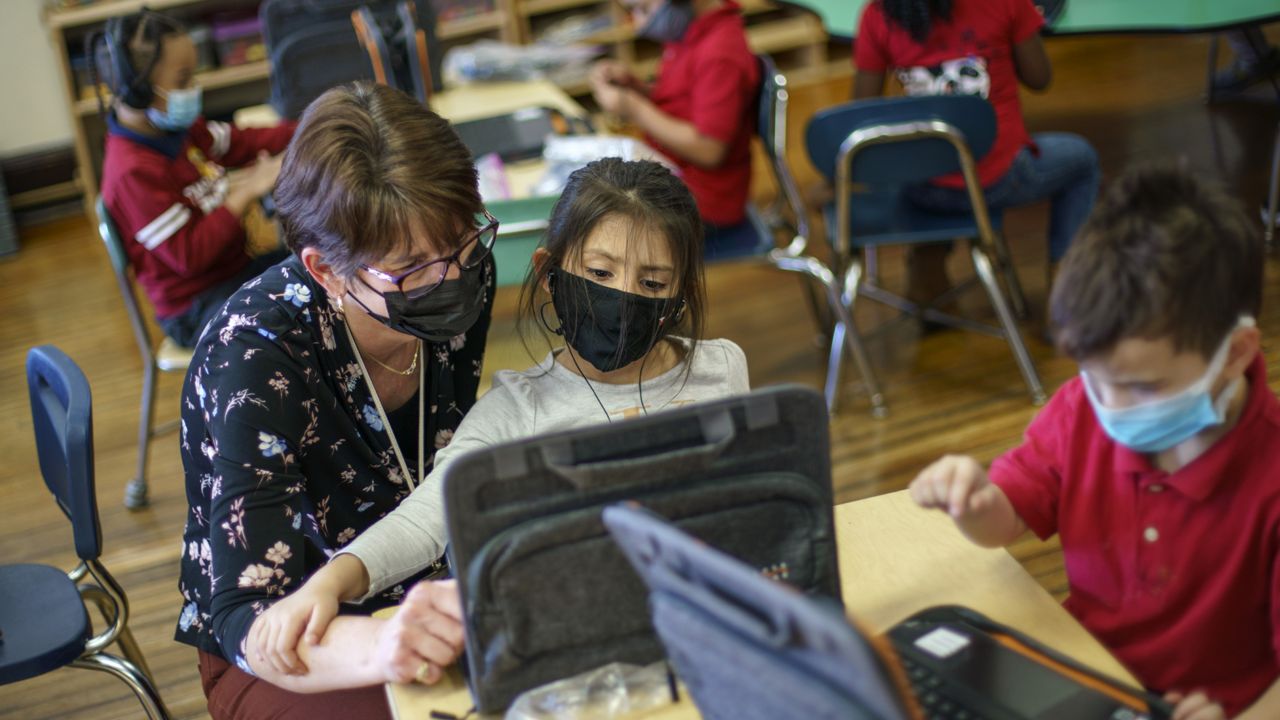A new report from the Economic Policy Institute highlights the “increasingly alarming trends” surrounding teacher pay, saying salaries for the profession have not kept up with rising costs of living, goods and other prices – or wages from other industries.
The report from EPI tracks the average weekly wage for public school teachers with at least a bachelor’s degree working a full-time job since 1979. At the time, the average weekly salary for a teacher was $1,052 (adjusted for inflation) while other college graduates received an average salary of $1,364 per week, representing a 23% difference between the two group’s earnings.
The split shrunk slightly in the mid-1990s, though complete data was unavailable for 1994 and 1995 – but by 1996, the wage split between teachers and other college graduates reached 15% with respective salaries at $1,319 and $1,564.
In the 25 years between 1996 and 2021, teachers' weekly wages rose by 0.3% in inflation-adjusted terms, increasing just $29 to an average $1,348 a week over the course of those two-plus decades. With non-teachers now making an average weekly salary of $2,009, the wage gap sits at nearly 23.5%, which represents the “largest difference” recorded by EPI since it first began tracking the data in the late 1970s.
The EPI calls this difference a “wage penalty,” which it defines as when “regression estimates suggest that teachers, all else equal, are paid less than other college graduates,” represented by a percentage difference. Should teachers ever be paid more than their non-teaching, college-educated counterparts, it would be called a “wage premium.”
The wage penalties vary widely by state, with Colorado coming in at the highest with a 36% difference in weekly salaries between teachers and non-teachers; states such as Nebraska, Arkansas, Massachusetts, Nevada and Maryland all hover around the midpoint of a 20% difference, while Rhode Island has the smallest teacher wage penalty at a 3.4% difference.
“In no state does the relative weekly wage of teachers equal or surpass that of their nonteaching college graduate counterparts,” the report noted in part.
The wage difference is even more pronounced for male teachers, who in 2021 made, on average, 35% less than non-teachers, which EPI says “goes a long way toward explaining why the gender makeup of the profession has not changed much over the past few decades.”
As of 2020, around 79% of public school teachers across the country were white women, according to the National Center for Education Statistics. While women in the teaching profession experienced relative pay parity with women working in other professions in the mid-1990s, that gap has swung back to a 17% wage penalty in 2021.
“The wage penalty for teachers overall hit record levels in 2021,” the EPI report noted in part. “When we break it down by gender, we see that both men and women faced record-high wage penalties for choosing teaching as a career.”
The widening pay gap comes as the United States has experienced record inflation and higher costs for consumer goods.
It also comes amid a concerning teacher shortage across the country. As was reported by The Wall Street Journal, data from the Bureau of Labor Statistics indicates approximately 300,000 public school educators and staff left the field between February 2020 and May 2022.
The American Association of Colleges for Teacher Education also noted enrollment in education degree programs has significantly declined over the past decade, particularly in specialty services, including a 4% decrease in special education certificates, a 27% decrease in science and mathematics education, and 44% decrease in foreign language education.
“It took us years to get to the place where we are now, and of course the pandemic has made the situation worse,” Jacqueline King, an independent consultant and co-author of the AACTE report, wrote. “There’s no magic bullet that’s going to turn this situation around.”
EPI posits that the continued wage gap might further exacerbate the teacher shortage.
“The financial penalty that teachers face discourages college students from entering the teaching profession and makes it difficult for school districts to keep current teachers in the classroom,” the report read. “Trends in teacher pay coupled with pandemic challenges may exacerbate annual shortages of regular and substitute teachers.”
In a recent interview with Spectrum News, Education Secretary Miguel Cardona noted the exodus from the teaching profession is likely due to low pay and lack of respect.
“At the end of the day, it's not just about money, it's about respect, it's about acknowledging the important work that they do,” Cardona said when asked why teachers are leaving their jobs.
"Teachers have gone from in-person learning one day to totally virtual the next," he said. "While we recognize our teachers have bent over backwards, we really have to make sure that as we're reopening schools, we're listening to what our parents and teachers have to say."



